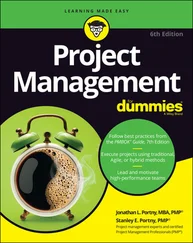 If you’re confused about the length of your summary task, remember that the summary task duration is the difference between the earliest task start date and latest task end date. However, nonworking days aren’t counted in the summary task duration. The length of the summary task, therefore, equals the number of days of work over the course of the subtasks, not the number of calendar days between the start of the first task and end of the last.
If you’re confused about the length of your summary task, remember that the summary task duration is the difference between the earliest task start date and latest task end date. However, nonworking days aren’t counted in the summary task duration. The length of the summary task, therefore, equals the number of days of work over the course of the subtasks, not the number of calendar days between the start of the first task and end of the last.
Not everyone uses project summary tasks. You can simply create, at the highest level of your outline, tasks that represent major project deliverables or phases — with subphases and subtasks below them — and not create one task that’s higher in the order than all others. However, having a project summary task has certain benefits:
You can quickly view totals for the project at a glance in the columns of data in Gantt Chart view and other views.
You can place a link to your project summary task in another project so that all data for one project is reflected in another. For example, Desert Rose Security is one project in the Desert Rose Community Program. If there are projects for each of the four neighborhoods in the community, you can create one schedule for security and one for each of the four neighborhoods. Then you can easily create a master schedule for the whole program by linking to the project summary tasks in each of the projects.
Moving Tasks Up, Down, and All Around
In Chapter 2, I show you how to outdent and indent tasks to create the WBS and the project outline. In this section, I show you additional ways to move tasks as well as collapse and expand tasks.
A maxim of project management says that things change: Tasks that you thought you could complete early can’t happen yet because money, people, or materials are in short supply. Or a task that you thought you couldn’t start until next July gets bumped up in priority when your customer changes their mind (again) about deliverables. Because of this changeability, when you enter tasks in a project outline, odds are that you’ll need to move those tasks around at some point. You should understand that moving a task can change its outline level, so you’ll need to check your outline level for tasks that you move and adjust it as necessary using the indent and outdent features.
Moving tasks with the drag-and-drop method
If you ask me, drag-and-drop is to computing what the remote control is to television. It’s a quick, no-brainer method of moving stuff around in software that just makes life simpler. Here’s an example:
To move a task up and down with the drag-and-drop method, follow these steps:
1 Display a column view, such as Gantt Chart view.
2 Select a task by clicking its task ID number.Simply click and release; don’t hold down the mouse button.
3 Click and drag the task to wherever you want it to appear in the outline.A gray “T-bar” line appears, indicating the new task position.
4 When the gray line is located where you want to insert the task, release the mouse button.The task appears in its new location. If you want the task to be at a different level of the outline, you can now indent or outdent it as needed.
 If you move the parent task, all the child tasks, and all the relevant information — such as start, finish, duration, cost, and so on — come with it.
If you move the parent task, all the child tasks, and all the relevant information — such as start, finish, duration, cost, and so on — come with it.
Moving tasks with the cut-and-paste method
Dragging and dropping works fine in most cases, but in very large projects — with a few hundred tasks or more, for example — it’s easier to cut and paste instead of scrolling through hundreds of tasks to find the exact location you want to move your tasks to.
In a larger outline, it’s best to use the cut-and-paste method to move tasks:
1 Select a task by clicking its task ID number.
2 Click the Cut button in the Clipboard group on the Task tab.The task is removed from its current location and placed on the Windows Clipboard.
3 Scroll to display the location where you want the task to appear.
4 Click the task after which you want to insert the task.
5 Click the top part of the Paste button, also on the Task tab.
If you want to insert a copy of a task in a project outline, you can follow the preceding steps and click Copy rather than Cut.
 If you’re cutting and copying only a single cell and not a whole task, click in the cell rather than clicking the task ID number.
If you’re cutting and copying only a single cell and not a whole task, click in the cell rather than clicking the task ID number.
 You can also use the standard Microsoft shortcuts — Ctrl+C to copy, Ctrl+X to cut, and Ctrl+V to paste.
You can also use the standard Microsoft shortcuts — Ctrl+C to copy, Ctrl+X to cut, and Ctrl+V to paste.
Now You See It, Now You Don’t: Collapsing and Expanding the Task Outline
Remember in elementary school when your teacher made you create an outline to organize your work? The outline helped you arrange content and allowed you to focus on different levels of information to keep everything organized.
With the invention of computer outlining, the capability to focus on only certain portions of an outline comes into its own, because you can easily expand and collapse an outline to show or hide different levels of information — or entire sections of your outline. The black triangle symbol next to the Walls summary task in Figure 3-1 indicates that all subtasks below it are displayed. The clear triangle next to the Equipment summary task indicates that the subtasks aren’t displayed. Remember that all summary tasks are in bold in the project outline.
This capability means that you can hide all but the upper level of tasks in a project to give your manager an overview of progress. Or you can collapse every phase of your project except the one in progress so that your team can focus on only those tasks in a status meeting. Or you can collapse most of your outline to make it easy to move to a late phase of a very large schedule.
If you want to hide all the summary tasks and just see the child tasks, you can go to the Format tab in the Gantt Chart Tools context tab group and uncheck the Summary Tasks box (see Figure 3-2). Another nifty feature in Project is the ability to choose which level of detail you want to see in your outline. To wrangle the tasks to the level you want them, it’s best to work with the View tab. In the View tab under the Data group, there is a drop-down option called Outline. Figure 3-3 shows you the commands you can use to control how your outline appears.
You can use the Show Subtasks command and the Hide Subtasks command at any level of summary tasks. Just select the summary task you want — regardless of whether it’s at Level 1 or Level 5 — and click Show Subtasks to see everything underneath, or click Hide Subtasks to just see the summary task.
When you want an overview of your project, it’s helpful to look at it from Level 1 or Level 2. You can see Desert Rose Security at Level 1 in Figure 3-2. Notice the duration for each of the summary level tasks. You can see how they nest within the Project Summary Task.
Figure 3-4 shows Perimeter and Equipment at Level 2. This level gives you a good overview of the work with a bit more detail than Level 1. Level 2 is the view I like to show management or other high-level stakeholders to give them an overall understanding of the project.
Читать дальше

 If you’re confused about the length of your summary task, remember that the summary task duration is the difference between the earliest task start date and latest task end date. However, nonworking days aren’t counted in the summary task duration. The length of the summary task, therefore, equals the number of days of work over the course of the subtasks, not the number of calendar days between the start of the first task and end of the last.
If you’re confused about the length of your summary task, remember that the summary task duration is the difference between the earliest task start date and latest task end date. However, nonworking days aren’t counted in the summary task duration. The length of the summary task, therefore, equals the number of days of work over the course of the subtasks, not the number of calendar days between the start of the first task and end of the last. If you’re cutting and copying only a single cell and not a whole task, click in the cell rather than clicking the task ID number.
If you’re cutting and copying only a single cell and not a whole task, click in the cell rather than clicking the task ID number.










